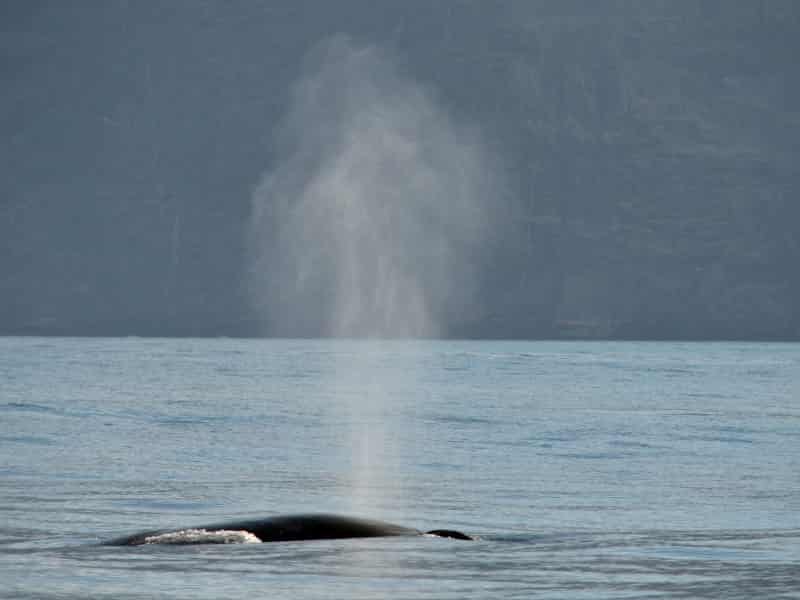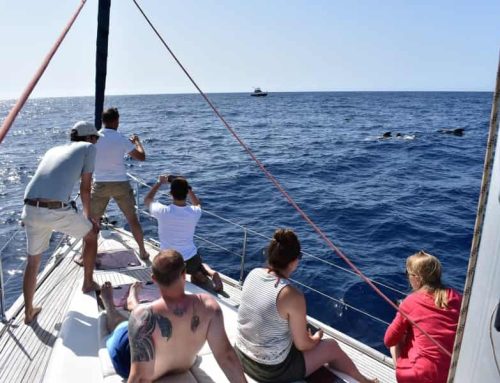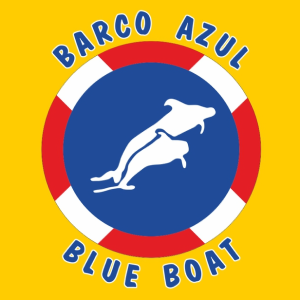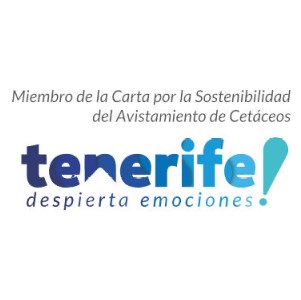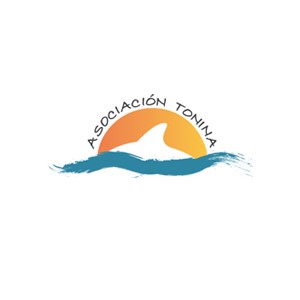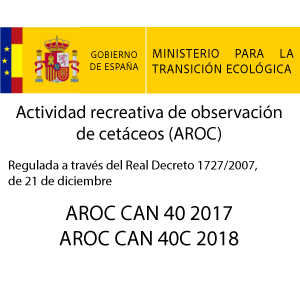The 5 largest marine species in Tenerife
Committed to all quality standards.
The waters of the Canary Islands present a varied and abundant fauna of marine species. Thanks to their location in the subtropical region of West Africa and their oceanic position, they have unique oceanographic characteristics, the land surface favors the coexistence of these species in warm and tropical waters.
Our interest is focused on the large marine animals, the cetaceans. Cetacea comes from the Latin cetaceus, formed from the Latin root cetus, which derives from the Greek κήτος (ketos) which means “whale” or “sea monster”, and the Latin suffix aceum, which expresses “belonging to a category or similarity”; in this case it means that among the category of cetaceans belong mammals that resemble whales.
Around 30 species of cetaceans have been identified on our coasts, which defines this archipelago as one of the places with the greatest diversification of cetaceans in the world and the first in Europe.
Near the coast of Tenerife we can see very large marine species, in this article we make a compilation, Top 5: of the largest marine species in Tenerife.
The sperm whale
The sperm whale is one of the most extraordinary animals, it is the animal with the largest brain in the world. This marine species can reach 18 meters in length and weigh up to 57,000 kg. It has a very large square head suitable for accommodating its large brain. The teeth can measure up to 20 centimeters. Life expectancy is 70 years, it usually swims in the open sea. This feature ensures another first in addition to size, being among the most intelligent animals and among those that dive deeper. It can stay up to 2 hours under water.
It is a carnivorous animal and its favorite food is squid. Its hunting technique is based on echolocation, a sensory system that consists of the emission of sound waves in the water that the animal ends up collecting in the form of echoes and analyzing them in the brain. This system is common to most “toothed whales”, such as dolphins, killer whales and pilot whales.
The Yubarta
The Humpback Whale (Megaptera novaeangliae), a mysticete cetacean that does not have teeth, if not a beard to feed on. They are present in all oceans and migrate from the cold waters of the polar areas to warmer areas to reproduce. It seems that the Canary Islands are a transit point between their breeding area in the Cape Verde Islands (February-March) and the feeding areas of northern Europe (July-August). Incredible and fascinating colossus of the sea, it belongs to the Balaenopteridae family, for this reason it can be considered one of the largest whales.
The name of the genus Megaptera comes from the Greek mega (μεγα) “large” and ptera (πτερα) “fin”, in reference to its large white pectoral fins, a distinctive feature of this marine species, along with the black color of its dorsal and his robust body. Humpback whales are baleen cetaceans, so they have between 14 and 35 folds in the throat that expand when the whale takes large amounts of water to feed (krill, herring and water plankton). These specimens can reach up to 18 meters and weigh up to 36 tons. Peculiar characteristic of the humpback whale are their jumps and acrobatic games: they jump out of the water, collide with each other and hit with their fins. Studies believe that it may be a language that allows this fabulous marine animal to communicate with its similars. In addition, the Yubarta is known for its vocalization or song: the songs are apparently performed by the males, who always sing the same song throughout their lives.
The Rorcual
The whale is another very large marine species sighted off the coast of the Canary Islands. Most frequently identified. The Tropical Fin Whale (Balaenoptera brydei), can reach 15.6 meters in length and can live up to 70 years. They have an elongated and hydrodynamic body, a sharp head, three cranial crests that distinguish them from the rest of the whales. These have white or light gray fringed beards. Compared to other whales, we know very little about this great animal.
The waters where they are usually seen are the tropical and subtropical ones of the three oceans, in the Canary Islands we can see them from February-March until the end of summer. Their favorite foods are sardines, mackerel, anchovies, shrimp and lobsters and usually solitary specimens are seen, although in areas of abundant food several specimens can be found quite close together. Each year the tropical whale spends more time in our waters.
The Tropical Calderon
The pilot whale (Globicephala macrorhynchus) represents the main marine species for cetacean observation in the Canary Islands. It is also known as a pilot whale, but it is part of the dolphin family. Approximately 500 specimens reside in the aquatic area between La Gomera and Tenerife, and many others are transient, which implies a unique presence worldwide. They have a robust body, a rounded head and a curved dorsal fin located in the first third of the body.
They can measure a maximum of 6.5 meters and weigh 1500 kg. As in the case of the sperm whale, the pilot whale’s favorite food is squid. They live in groups led by a matriarch, with a very complex social structure that compares them to us as non-human beings located in the highest part of the marine food chain. The Canary Islands and the Hawaiian Islands are the only places where they form resident groups.
The Orca
Last but not least, we want to mention the Orca (Orcinus Orca) is one of the best known marine species in the world. Protagonist of movies, books and documentaries, it has always been presented as a dangerous animal, hence the name “killer whale”. In the Canary Islands sightings are sporadic and coincide with the presence of large schools of tuna. There are confirmed references of its presence in all the islands.
The large size, the black and white color, the rounded shape and the white spots on the eyes are distinctive characteristics of this cetacean.
The size can vary from six meters to a maximum of nine meters in males, and the weight from 2.5 to 6 tons. Killer whales live in groups of 3 to 25 specimens, with close blood relationships. Each family uses a different vocalization, or dialect, to communicate with each other. Their diet is very varied and they usually eat tuna, cephalopods, seals, penguins and even other cetaceans. A curiosity of their hunting habit is that the animals collaborate with each other to capture prey.
As you can see, the waters that surround the wonderful coasts of Tenerife and the Canary archipelago are full of incredibly large marine species and some of them are almost mythological. We have been lucky enough to see many of them and the truth is that the experience is incredible, and you, have you ever seen any of these giants of the sea? , tell us your experience.


